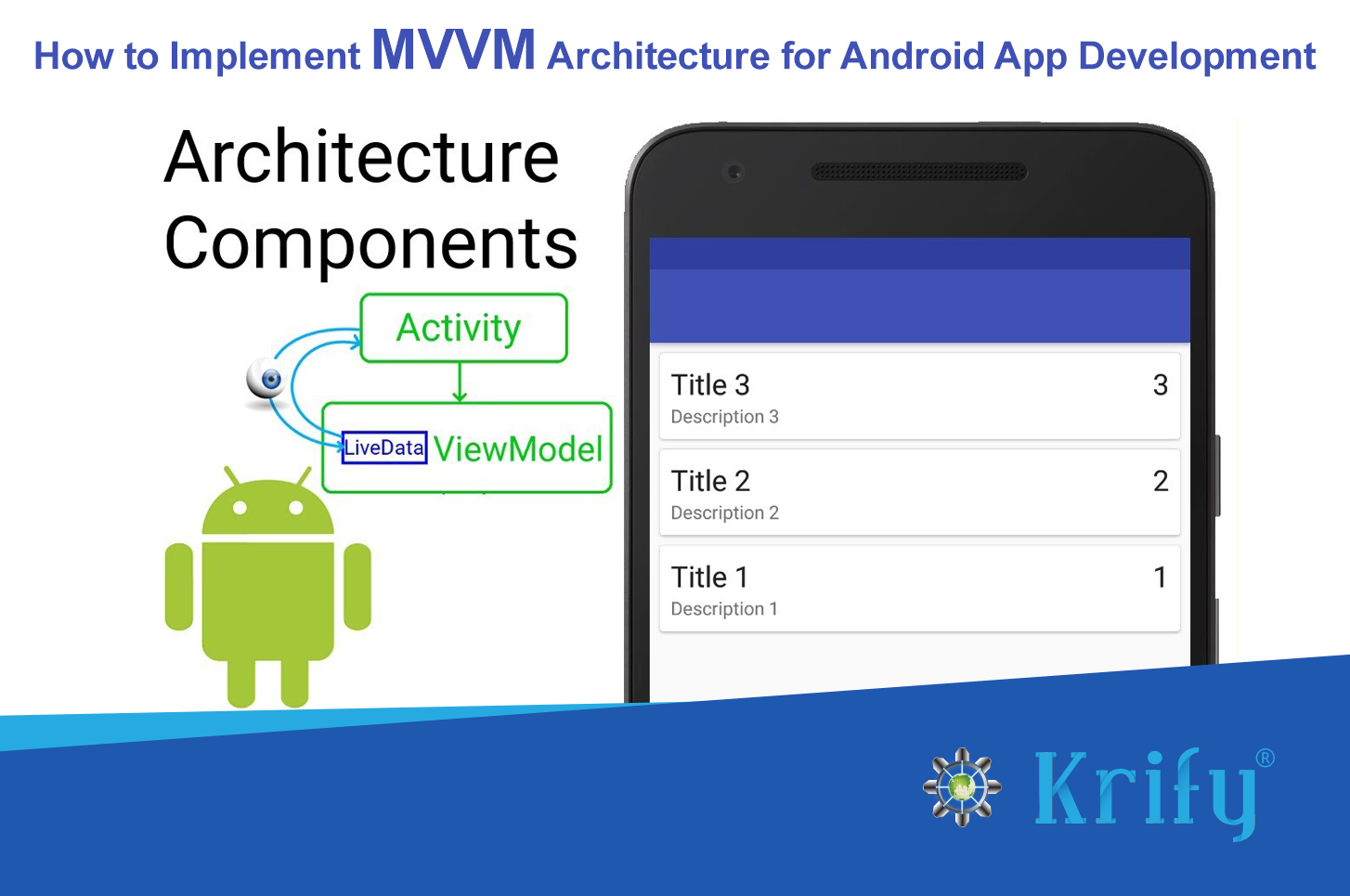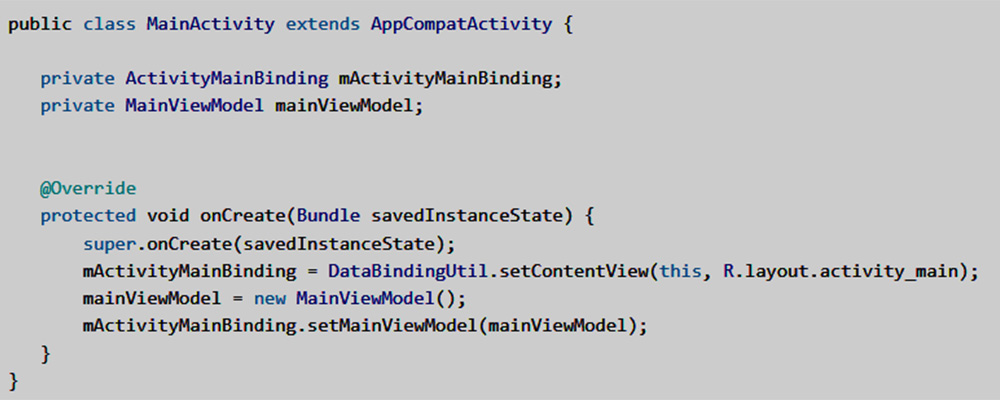For any app developer, there is nothing better than having a clean and structured code. And to achieve this, one must follow a design pattern for the projects. To have design patterns, Android app developers are using three main architectural patterns designs to create professional level application MVC, MVP, and MVVM. Google published that MVVM architecture is the official first party support at Google I/O. It is supported and encouraged by Google itself. So, now, MVVM become the number one choice to architect robust and production quality apps.
In this blog, we will discuss detail about MVVM architectural design pattern. How does it assist in building a robust and expert level MVVM Architecture for Android Application Development? And Also look at pros and cons of MVVM architecture Pattern.
What is MVVM?
MVVM stands for Model View View Model, and it is a design pattern that is employed to build software. Here we focus on MVVM Architecture for Android App Development. MVVM supports to separate the business logic of the application from Views or UI, and this is an essential thing to do for any software or app development. Google introduced Android Architecture components that include ViewModel despite Presenter, and hence, it is proved that even Google is supporting MVVM. The MVVM Android developers follow the pattern that empowers to write a clean, maintainable and testable code. The MVVM architecture will follow three main categories of component, which helps the concept of separation of concerns Model, View an ViewModel.
Model: Model is responsible for handling the data in the application. A model cannot directly interact with Views but can interact with ViewModels and then Views with the help of observables.
View: In Android, this is the user interface of the application that represents a view in the MVVM design pattern. It should not contain any application Logic. Its function is only to recognize input like touch, swipe, and visualization.
The ModelView-ViewModel architecture pattern has been introduced to Android with the involvement of DataBinding library. You can enable data binding from app.gradle
Add these lines in App.gradle inside andorid{} tag. Then put XML layout code under <layout></layout> tag. This will create a binding class, and you can access this class from activity. Check this code, and you can directly access the getText() method from XML.
Once setContentView in an activity, you just set a reference to the view model.
ViewModel: It acts as a link between Model and View. ViewModels are simple classes that associate with the logic/model layer and show states/data that have no idea by whom or how that data will be utilized. Only the view holds the reference to ViewModel and not vice-versa; this determines our tight coupling problem. A single view can hold a recommendation to multiple ViewModels.
What is MVVM?
The structure of Android app development is much more complicated as compared to desktop. This is because the Android app development contains multiple components such as Activities, fragments, services, content providers, and broadcast receivers. Each Android Architecture Components & MVVM Architecture have a different life cycle.
Google Android development team built an MVVM architectural design pattern solution that is capable of adapting to different sort of user-driven workflows and tasks. This architectural pattern is known as MVVM.
MVVM Architecture Principles
There are two main basic principles of MVVM Architecture design pattern
- Separation: Separation of concerns principles such as UI-based classes(Activity, Fragment) will contain only the logic that handles UI and operating system interactions. By holding these classes as lean as possible, one can avoid many lifecycle related problems.
- Drive UI from Model: This is the most persistent model. Models are components that are capable of handling the data for an app.
MVVM Architecture in Android App Development
The recommended MVVM pattern for Android architecture patterns is the following architecture
The first thing involved is the Repository which is responsible for handling the data and may use multiple data sources per the need. It fetches data from a remote source or the local storage.
Advantages of using MVVM Architecture pattern for Android
Let’s check the benefits of using the MVVM architecture in Android app development
- If you use the MVVM design pattern will help you to have the structure of your code neatly and cleanly so it that it is easy to understand for a new MVVM android developer.
- Utilizing Android architecture patterns like MVVM for your Android app development ensures easy maintainability and quick changes due to well-organized components.
- Testing the code becomes easy with MVVM Architecture since all modules are independent and testable.
- Enhanced reusability of the code.
- Can add new features more quickly
- Code is decoupled
- The package structure is easy to navigate
Difference to MVP
MVVM Architecture uses data binding and therefore, a more event-driven architecture. MVP has one to one mapping between the presenter and the view, whereas the MVVM can map many aspects to one view model. In the MVVM design pattern, the view model has no reference to the view, while in MVP, the view knows the presenter.
Conclusion
MVVM architecture can merge the benefits of separation of interests given by MVP while leveraging the advantages of data bindings. The result is a design where the model drives as many operations as possible, reducing the logic in the view.
Krify is one of the leading web and mobile app development company in India and UK. Hire our expert Web and Mobile app developers who have knowledge in trending technologies. Reach us for any requirement on Android app development.










